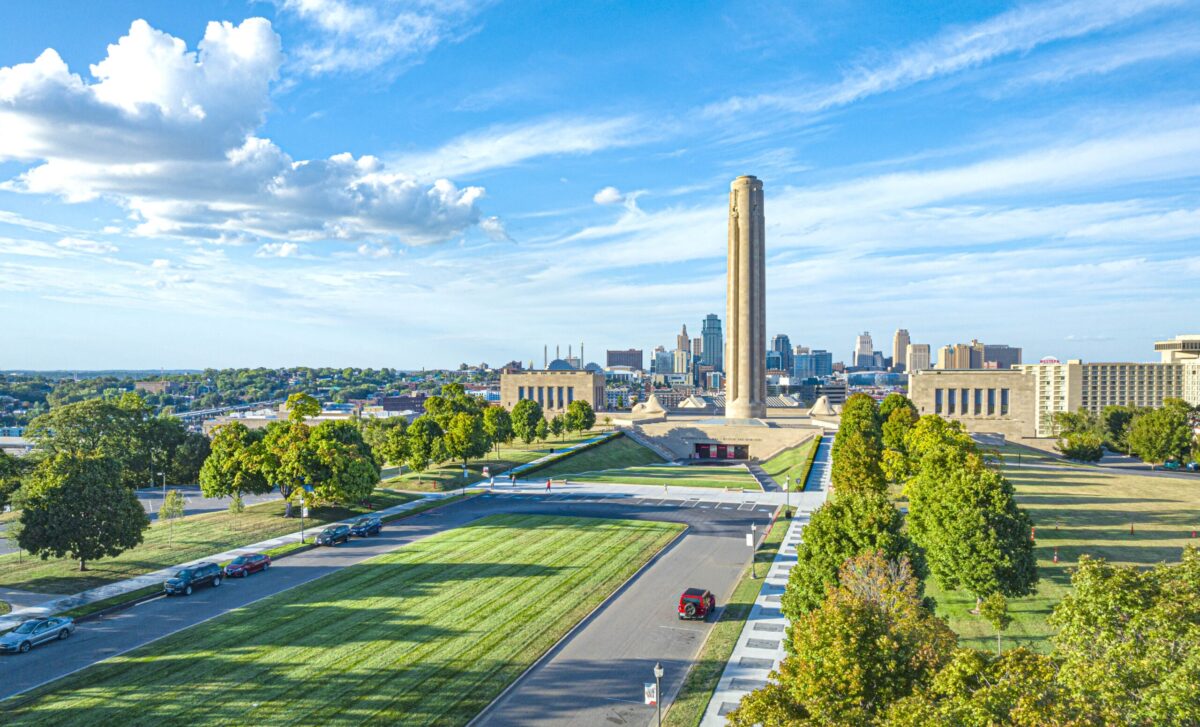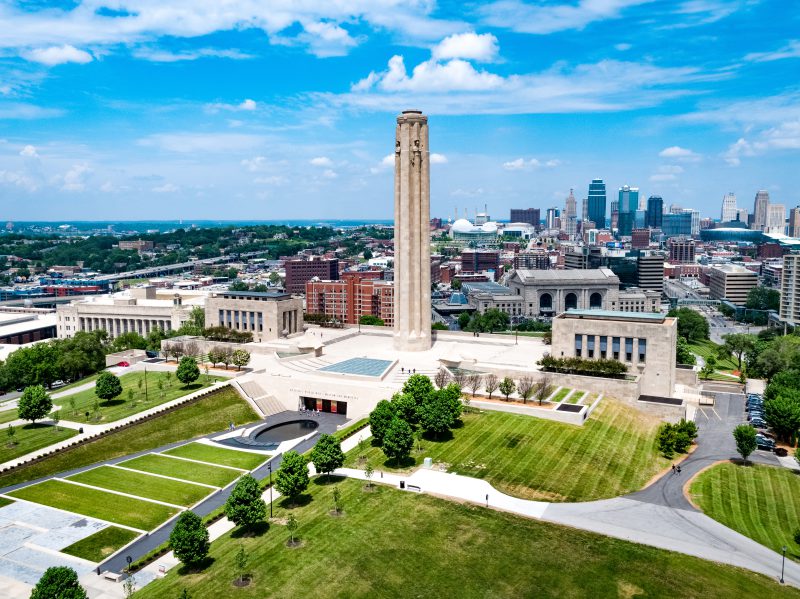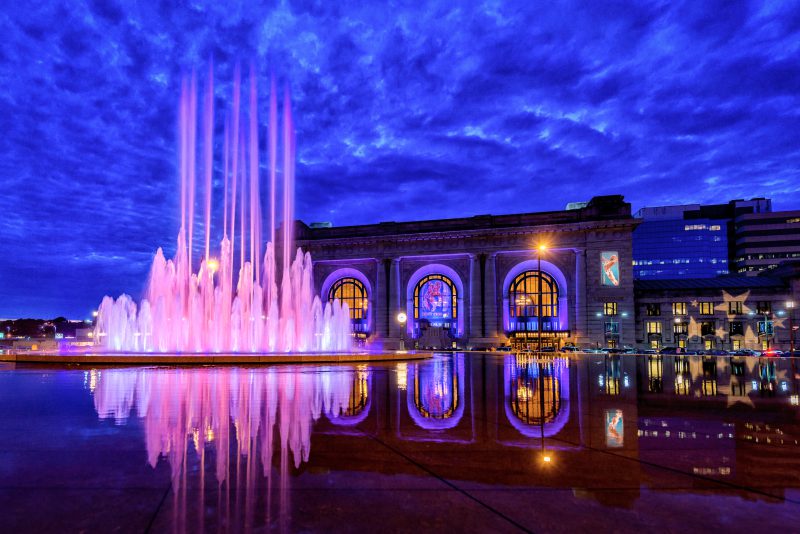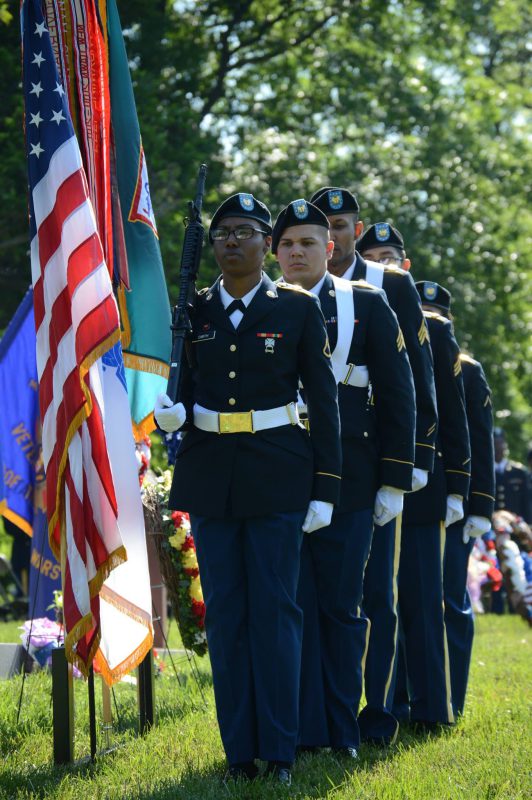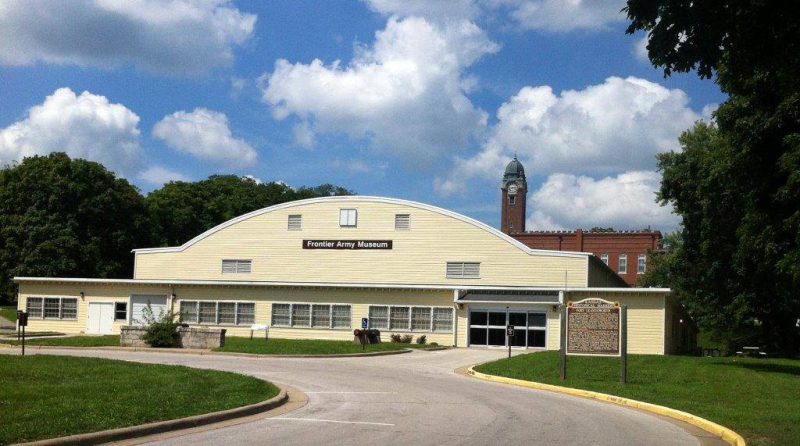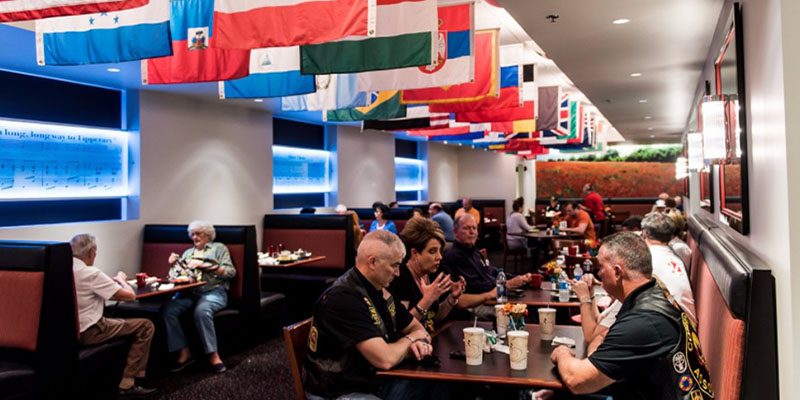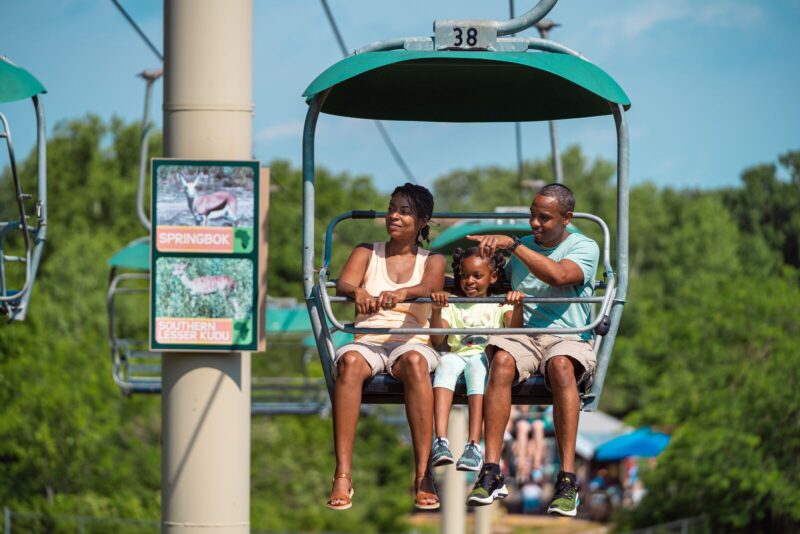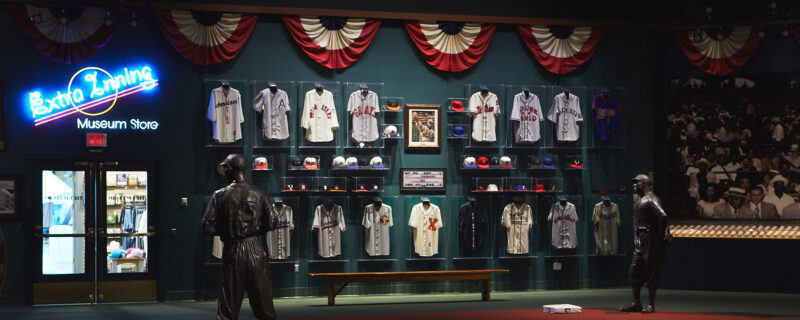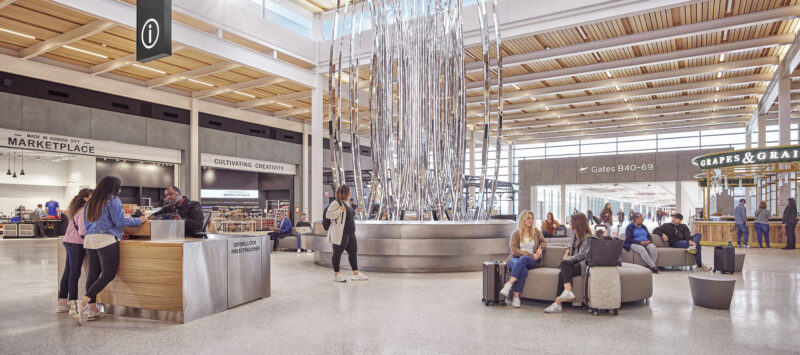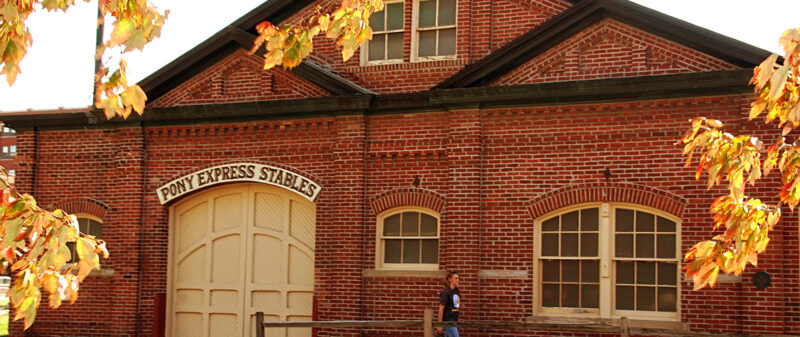The Kansas City area has a rich military history, dating back to the United States’ westward expansion and the American Civil War. Today, you can still find several monuments, memorials and museums reflecting on the region’s past.
Here’s how to pack your itinerary with historic military sites across the Kansas City area.
Kansas City
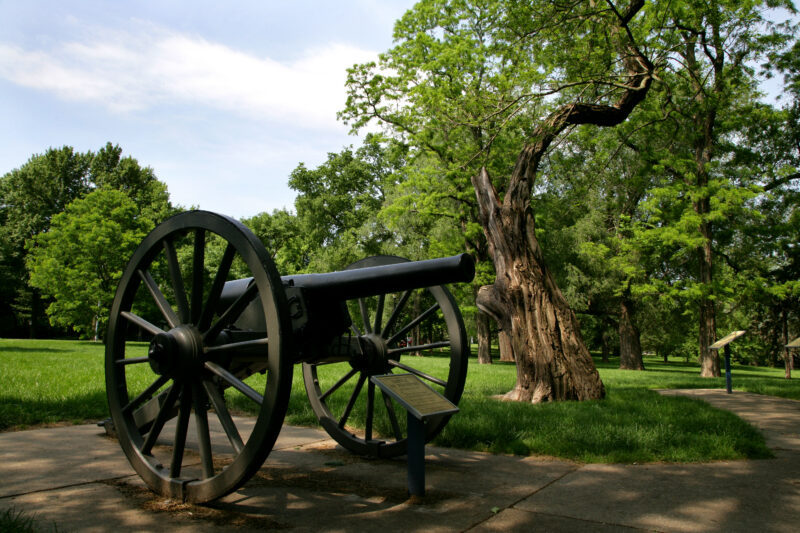
As the site of one of the most pivotal Civil War battles and home to the nation’s official World War I museum, Kansas City is ripe with decades of military history.
LEARN:
At the National WWI Museum and Memorial, visitors can explore the only American museum solely dedicated to preserving the objects, history and personal experiences of the Great War.
The museum also holds the most diverse collection of World War I objects and documents in the world. Guests can immerse themselves in these stories with interactive films, high-tech lighting and special effects, open storage of artifacts, and more.
Don’t miss the unparralled views of Union Station and the Kansas City skyline from Memorial Courtyard or take a ride to the top of the tower for 360-degree views.
DINE:
After enjoying your visit to the National WWI Museum and Memorial, grab a bite to eat at Over There Café. Guests dine surrounded by World War I-themed décor featuring the flags of the Allied and Central Powers and a poppy field mural.
GO:
The Battle of Westport, often referred to as “The Gettysburg of the West,” was one of the largest battles fought west of the Mississippi River and a vital turning point in the Civil War. Visit Loose Park, which was the scene of fierce fighting, to see multiple markers and monuments for the battle.
For more Battle of Westport and Civil War history in Kansas City, explore this 32-mile driving or biking tour with audio descriptions for each stop.
EXPERIENCE:
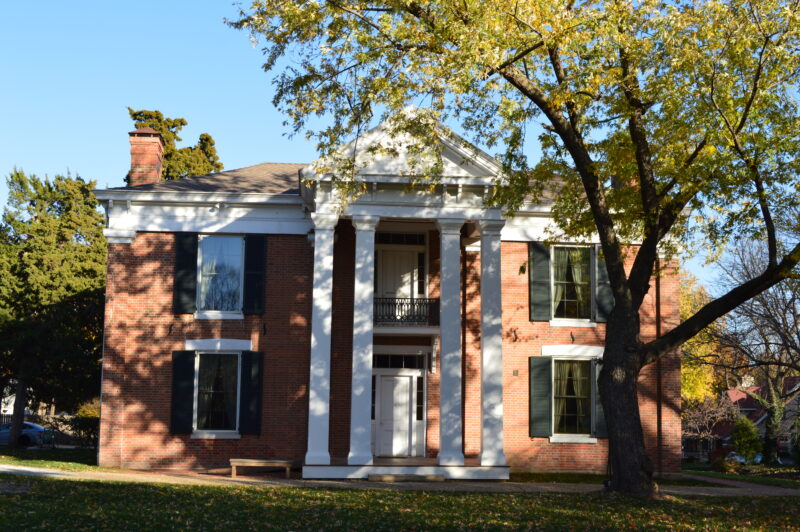
A prosperous farmer in Jackson County, John Bristow Wornall built his now-infamous home in 1858, making it one of the few surviving pre-Civil War homes still remaining in Kansas City. Both armies used it as a field hospital during the Battle of Westport.
In the years since, the Wornall House Museum has been full restored to how it may have looked in 1858 and includes many items that belonged to the Wornall family in the 19th and early 20th centuries. Visitors will also find several Civil War artifacts. The museum is regularly open for self-guided tours and offers limited guided tours on Saturdays.
MORE:
Union Cemetery is the oldest public cemetery in Kansas City and listed on the National Register of Historic Places. Many of Kansas City’s founders are buried there.
Visitors can also find gravesites for many people connected to the Civil War, including Josephine Anderson, sister of “Bloody” Bill Anderson who was killed in the 1863 jail collapse that provoked William Quantrill to raid nearby Lawrence, Kansas. A war monument dedicated to the memory of 15 unknown Confederate prisoners of war is also located on the grounds.
Independence
As the longtime home of President Harry S. Truman, Independence is now the site of his presidential library and museum, recording everything from his World War I service to his leadership during the Korean War.
LEARN:
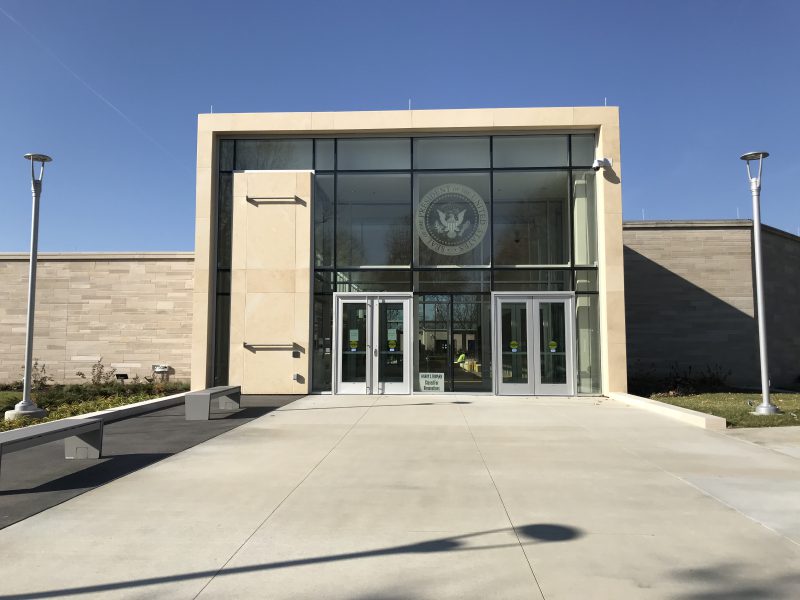
The Harry S. Truman Presidential Library and Museum chronicles the life of America’s 33rd president. One of only 16 U.S. Presidential Libraries, the museum’s exhibits chronicle the Missourian’s private life and political career, depicting his most difficult decisions — like using the atomic bomb, the Cold War and recognizing Israel.
The museum’s historical collection consists of approximately 30,000 objects — including hundreds of Truman family possessions, political memorabilia, diplomatic gifts and 1,300 letters from the Truman courtship and marriage.
Visitors can also see two of Truman’s offices: the actual office he used at the library from 1957-1966 and a replica of his Oval Office. President Truman and his wife, Bess, are buried in the museum’s courtyard.
Fort Leavenworth
Known as the “Post that Opened the West,” Fort Leavenworth was established in 1827, making it the third-oldest active military installation in the nation. The post played a key role in keeping the peace among various Native American tribes and settlers heading West to make their fortune. Today visitors can tour several museums and historical sites that honor Fort Leavenworth’s history.
GO:
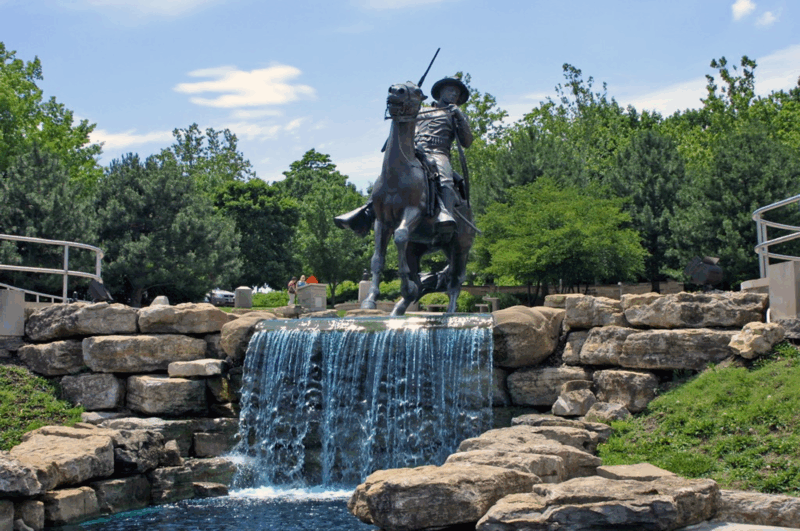
Fort Leavenworth actively serves current U.S. military operations and welcomes visitors to their historic post. A government-issued photo ID, such as a driver’s license, is required to enter the fort. Vehicle registration and insurance must be up to date as well. Register online in advance or stop at the Visitor Control Center for a visitor pass.
Some of the fort’s highlights include the National Cemetery, one of the first 10 national cemeteries established by President Abraham Lincoln; Memorial Chapel, one of the oldest chapels in the Army; the U.S. Army Command and General Staff College; and a 22-stop self-guided historical tour.
The Buffalo Soldier monument, also located on Fort Leavenworth, was dedicated in 1992 to honor the Black soldiers who served in various Buffalo Soldiers regiments formed in 1866.
LEARN:
The Frontier Army Museum collects and preserves items to tell the story of the Frontier Army from 1804 to 1916 and Fort Leavenworth from 1827 to the present day. Officially recognized as an Army Museum in 1960, the museum preserves one of the finest collections of 19th Century military artifacts in the country.
DINE:
Located in the post’s former U.S. Disciplinary Barracks, the 12th Brick Grille serves lunch every weekday with menu items’ names inspired by the historic location. The “12th Brick” refers to inmate-produced bricks used to build “the castle” of the prison. Every 12th brick made was stamped with USMP for “United States Military Prison.”
Lexington
This small Missouri River town was the site of not just one but two Civil War battles, both of which were among the largest battles on the western campaign of the war.
EXPERIENCE:
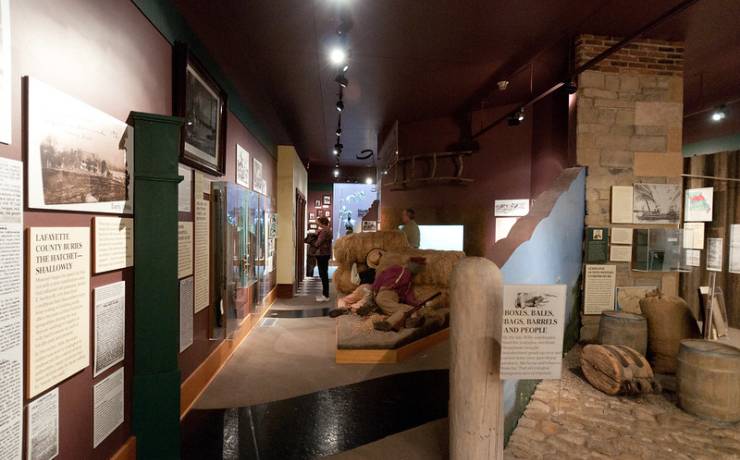
People once called Oliver Anderson’s house in Lexington “the best arranged dwelling house west of St. Louis.” But it eventually became more famous as the center of the 1861 Battle of Lexington, commonly referred to as the Battle of the Hemp Bales.
Today, visitors can walk through the Anderson House at Battle of Lexington State Historic Site and see the bullet holes still in the walls and evidence of the cannon shots. A cannonball is also lodged in one of the pillars of the county courthouse, which is the oldest operational courthouse west of the Mississippi.
DINE:
Located just across the street from the county courthouse, Ten Twelve Main is just minutes from the battlesite with a menu showcasing fresh beef from a local Missouri farm and more. Built in 1880, the historic building initially served as a bank and has impressive architectural details inside and out.
Your 2-Day Itinerary
Here’s how to spend two days experiencing some of the Kansas City area’s top historic military sites.
This itinerary allows you to depart from and return to Kansas City each day if desired. Some destinations on this route are not easily accessible via public transportation. If you plan to follow this itinerary, a rental car/private vehicle is strongly recommended.
Day 1: Fort Leavenworth or Lexington and Kansas City
- Pick One: Travel to Fort Leavenworth or Lexington (via car) and visit the Army post or Civil War battlesite.
- Have lunch at 12th Brick Grille on Fort Leavenworth or Ten Twelve Main in Lexington.
- Drive to Kansas City and visit Wornall House Museum and nearby Loose Park.
- Travel to Union Cemetery (by car or KC Streetcar) and browse the grounds.
Day 2: Kansas City and Independence
- Visit the National WWI Museum and Memorial (accessible via KC Streetcar).
- Have lunch at Over There Cafe.
- Drive to Independence and visit the Truman Presidential Library and Museum.
